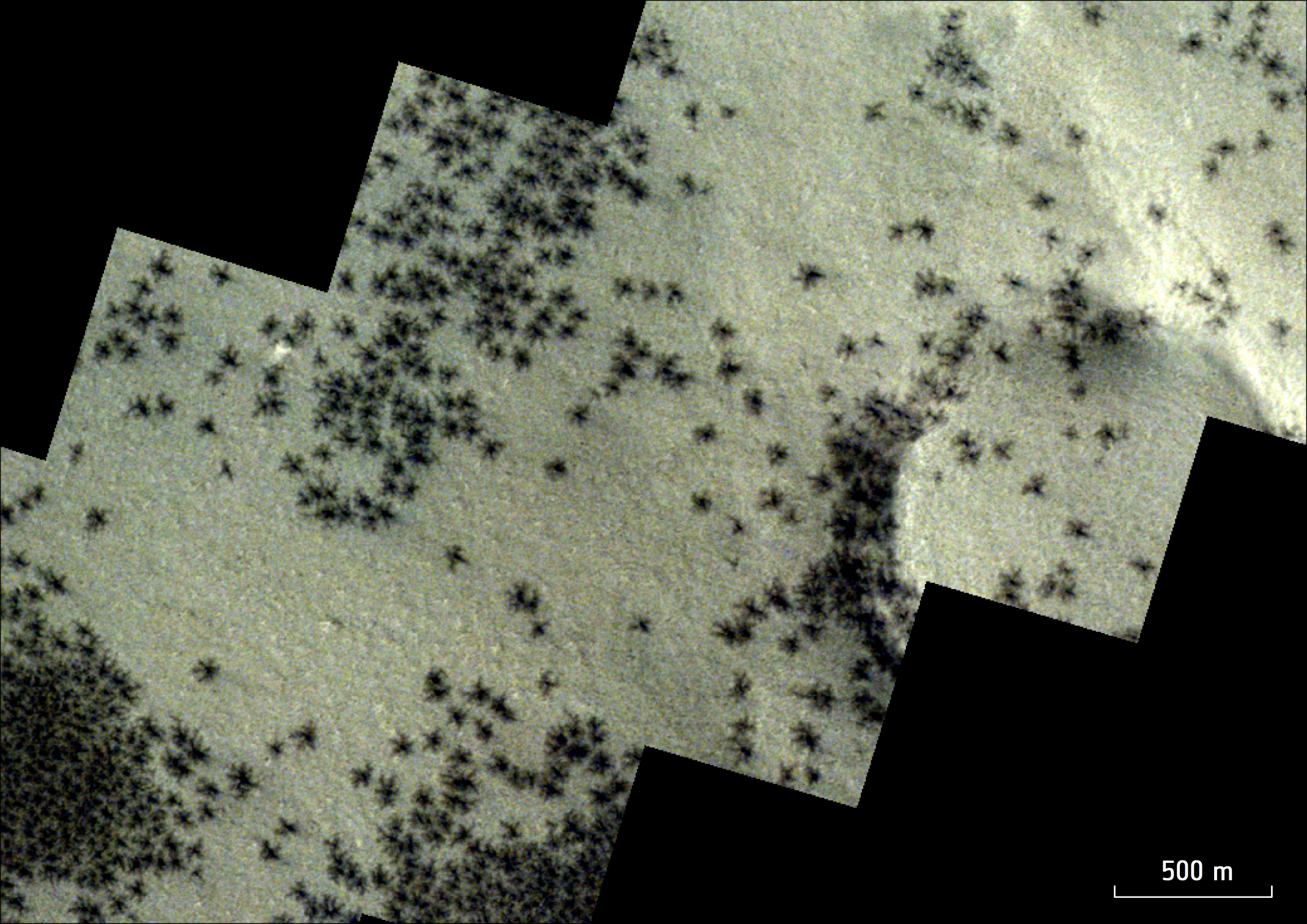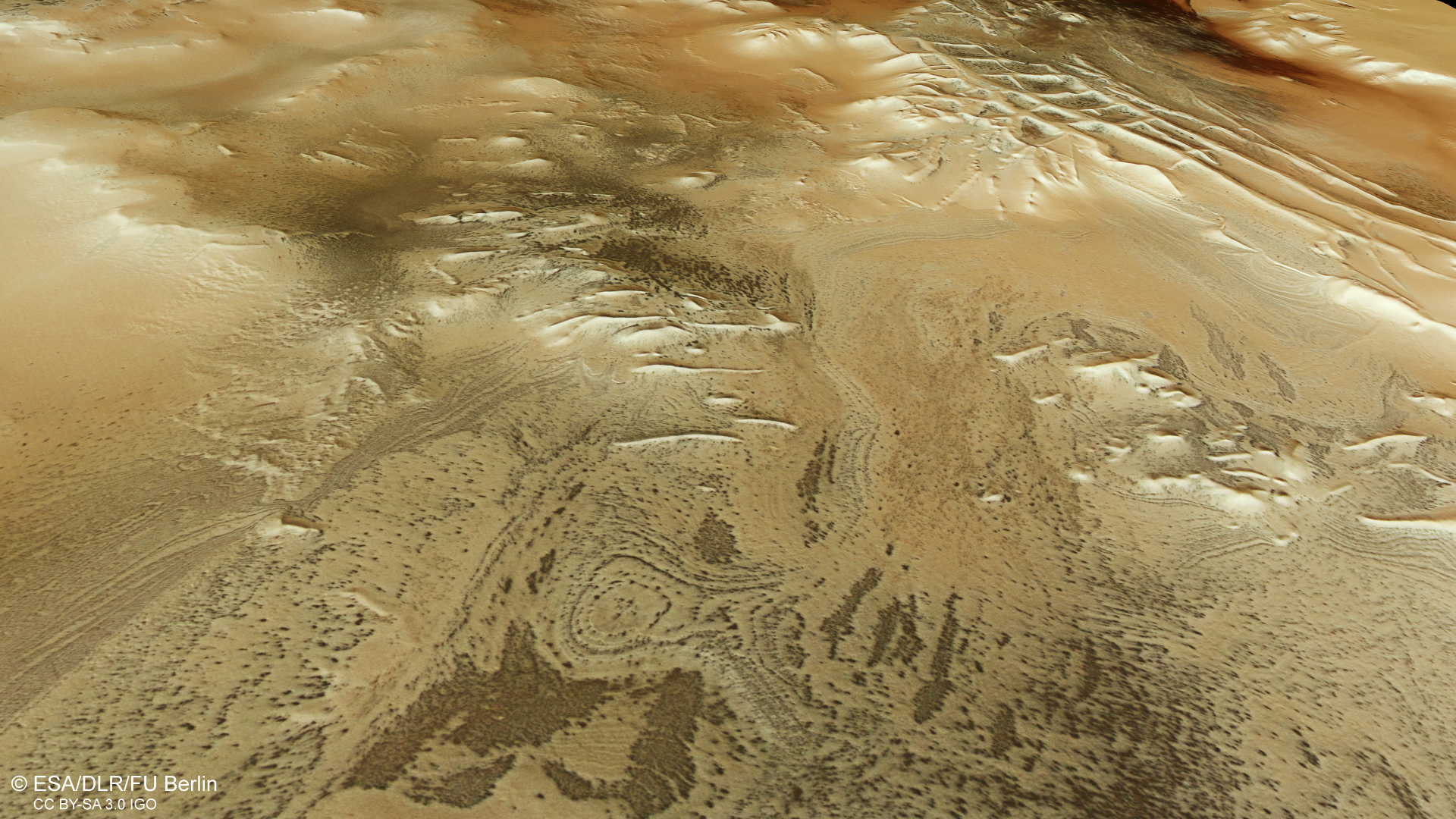Arachnophobes can rest easy — new ESA satellite images of flocks of black spiders on Mars actually show a seasonal phenomenon common to the planet.
The dark spindle-shaped formations were spotted in the city of Inca (Mars’ southern polar region) by the Mars Express orbiter and the ExoMars Trace Gas Orbiter. In reality, «black spiders» — are channels 45 meters to 1 km long that appear on the planet during the Martian spring and the melting of frozen carbon dioxide.

Gas from the lower layers expands and rises, exploding in the upper layers and carrying dark dust — these geysers form a cracked pattern resembling spiders before descending. According to the ESA, in some places geysers break through ice up to 1 meter thick.

The Inca City, also known as Angustus Labyrinthus, contains many linear ridges that look like ruins — thought to be fossilized sand dunes or remnants of ancient Martian glaciers that may have left high walls of sediment as they retreated.
However, in 2002, the Mars Orbiter spacecraft discovered that the region is actually part of a circular structure approximately 86 km wide — that is, an old impact crater in fact, suggesting that the geometric ridges may be magmatic intrusions that rose through the cracked, heated crust of Mars after the impact of a space rock. The crater was then filled with sediment, which has since eroded away, partially revealing magmatic formations that resemble ancient ruins.
Source: livescience
